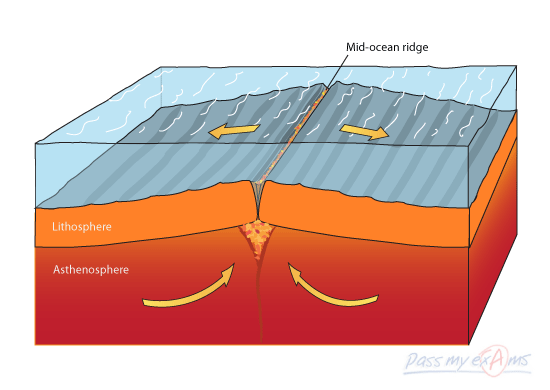
The Journey of Earth
BOUNDARY TYPES
CONVERGENT:
Convergent boundaries are when two plates collide causing one of the plates (genrally the older and denser one) to be pushed underneath the other one. This often leads to the formation of things such as mountains and volcanoes, where the plate underneath pushes the other plate upwards. Because of this, volcanoes can also form as the magma underneath has a pathway to go upwards to the surfave of the earth. They have found that convergent boundaries are constantly creating new material (magma) between the two plates, pushing the older material farther to the side.
DIVERGENT:
Divergent boundaries occur when plates move away from each other. These often form things such as trenches or ridges that can go very deep. The Marianas Trench is the deepest place in the ocean floor reaching a depth of over 35 000ft. When this happens, the plates drift away from each other and material is pulled back into earth's center underneath the sea floor. Therefore, they have found that material (magma) between two plates is the oldest and the further away from the boundary you get, the newer the material.
TRANSFORM:
Transform boundaries occur when plates slide past each other. This causes shear stress as the two plates move in opposite directions. This does not always cause any outstanding or noticeable features like convergent and divergent boundaries do; however may form linear valleys or stream beds. The most famous transform boundary - San Andres Fault where a very distinguishable crack can be seen between the two plates. This, overtime will move San Francisco closer to Los Angelas


